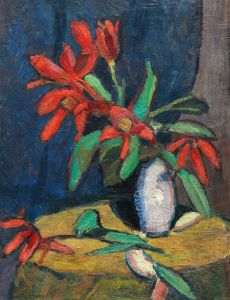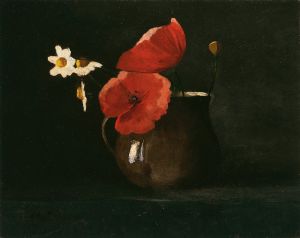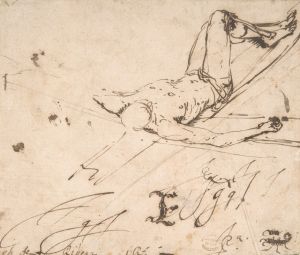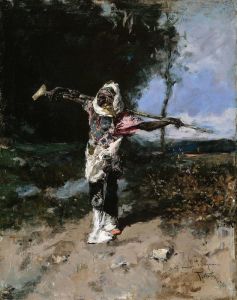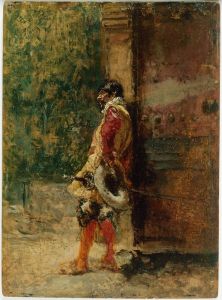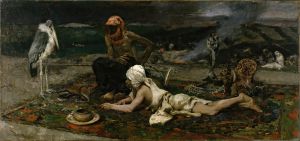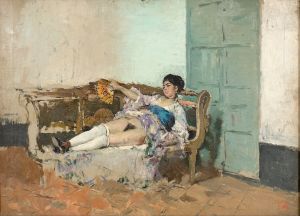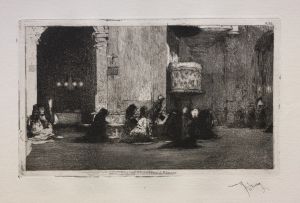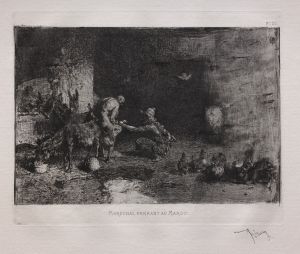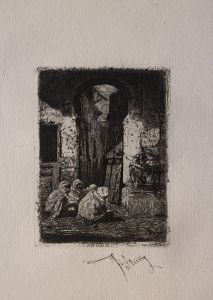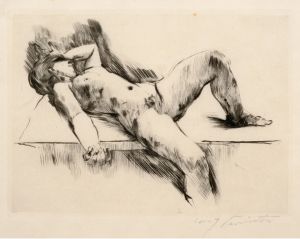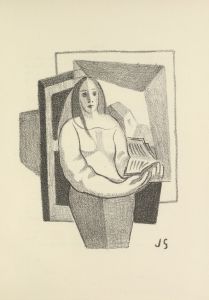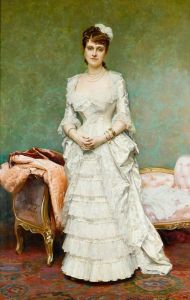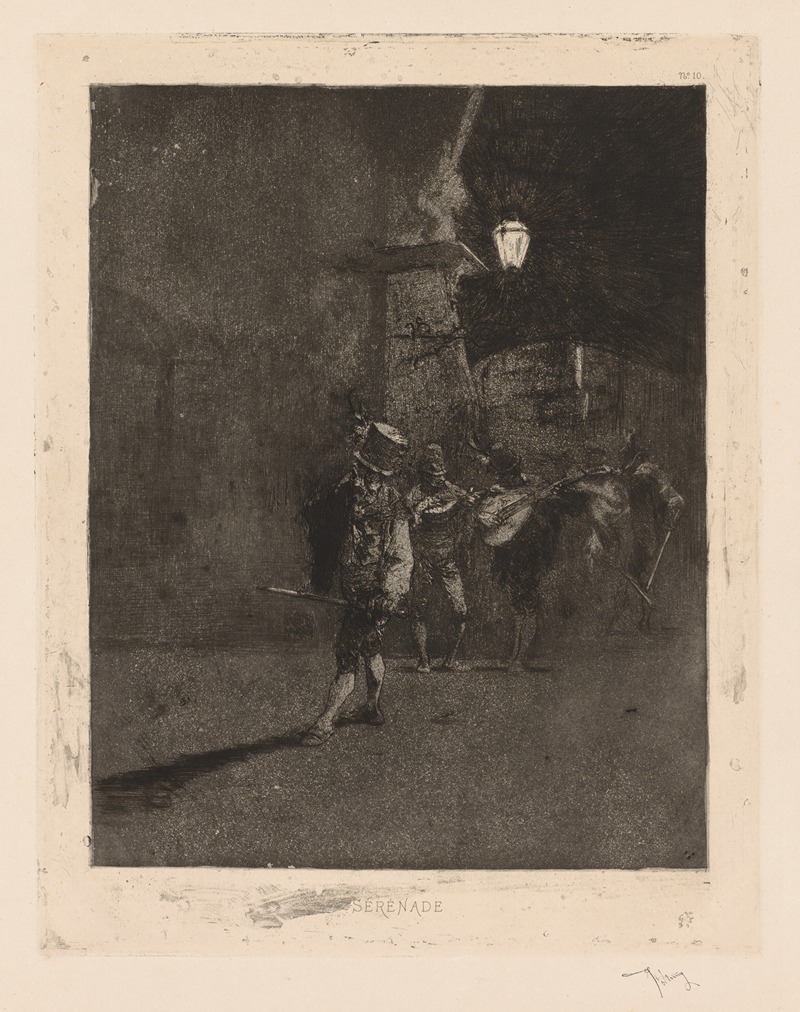
Serenade
A hand-painted replica of Mariano Fortuny Marsal’s masterpiece Serenade, meticulously crafted by professional artists to capture the true essence of the original. Each piece is created with museum-quality canvas and rare mineral pigments, carefully painted by experienced artists with delicate brushstrokes and rich, layered colors to perfectly recreate the texture of the original artwork. Unlike machine-printed reproductions, this hand-painted version brings the painting to life, infused with the artist’s emotions and skill in every stroke. Whether for personal collection or home decoration, it instantly elevates the artistic atmosphere of any space.
Mariano Fortuny Marsal, a prominent Spanish painter of the 19th century, is known for his detailed and evocative works that often capture the essence of Spanish culture and life. One of his notable paintings is "Serenade," which exemplifies his skill in portraying intimate and atmospheric scenes.
"Serenade" is a painting that reflects Fortuny's fascination with the interplay of light and shadow, as well as his ability to capture the mood of a moment. While specific details about the creation date or the current location of "Serenade" are not widely documented, the painting is often associated with Fortuny's mature period, during which he developed a distinctive style characterized by vibrant colors and meticulous attention to detail.
The painting depicts a scene that is both romantic and culturally rich, likely set in a Spanish locale. In "Serenade," Fortuny employs his mastery of light to create a sense of depth and realism. The use of chiaroscuro, a technique that contrasts light and dark, is evident in the way the figures and their surroundings are illuminated, adding a dramatic effect to the composition.
Fortuny's work often reflects his interest in the customs and traditions of Spain, and "Serenade" is no exception. The painting captures a moment of musical performance, a theme that resonates with the cultural practices of serenading in Spanish society. This practice typically involves musicians performing love songs or romantic ballads, often under the window of a beloved, creating an atmosphere of courtship and admiration.
The figures in "Serenade" are rendered with Fortuny's characteristic attention to detail, showcasing his ability to depict human expressions and emotions with precision. The clothing and setting are indicative of the period's fashion and architecture, providing viewers with a glimpse into the historical context of the scene.
Fortuny's influence from other artists and movements is also apparent in "Serenade." His exposure to the works of the Italian Renaissance and the French Impressionists can be seen in his approach to composition and color. The painting's dynamic arrangement and the fluidity of the brushstrokes suggest a blend of traditional and modern techniques, highlighting Fortuny's innovative spirit.
Though "Serenade" may not be as widely recognized as some of Fortuny's other works, it remains an important piece within his oeuvre, showcasing his ability to convey emotion and narrative through art. Fortuny's legacy as a painter is marked by his contributions to the Romantic and Orientalist movements, and "Serenade" exemplifies his talent in capturing the beauty and complexity of human experiences.
In summary, "Serenade" by Mariano Fortuny Marsal is a testament to the artist's skill in creating evocative and culturally resonant scenes. Through his use of light, color, and composition, Fortuny brings to life a moment of musical and romantic expression, offering viewers a window into the rich tapestry of 19th-century Spanish life.





